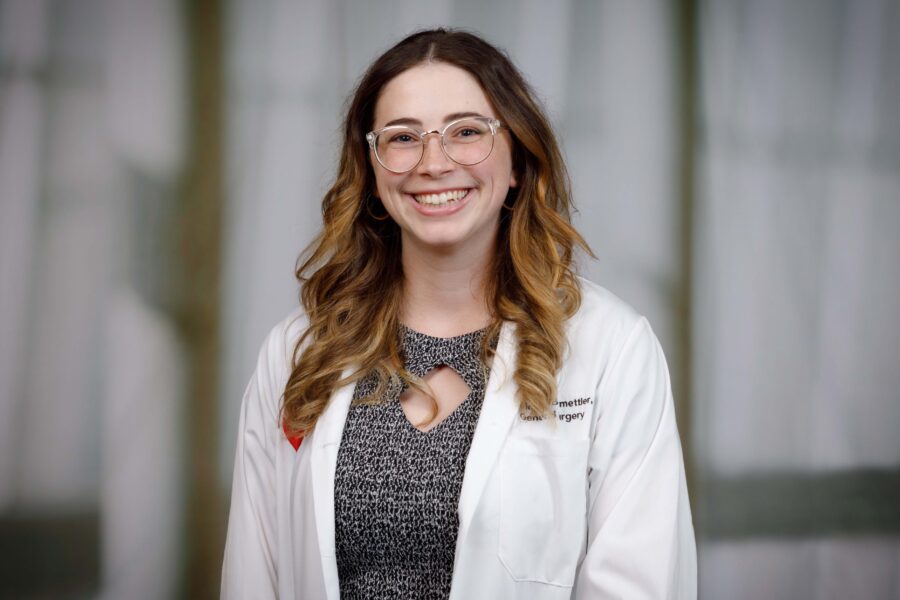A paper by Nicolle Barmettler, MD, a resident in the UNMC Department of Surgery, placed second in the American College of Surgeons Committee on Trauma’s competition for resident and fellow researchers.
Dr. Barmettler’s paper, currently in the pre-publication process for the ACS’s journal, attempted to find a data-driven solution to the question of where to position pre-hospital blood products in the cities of Omaha and Lincoln to most positively impact victims of traumatic events, said Rey Henry, MD.
Using data from Nebraska Medicine and Creighton and Bryan Medical Center in Lincoln, the project attempted to pinpoint, using ZIP code locations of incidents that led to blood transfusions at the hospitals, the best-placed emergency vehicles to position pre-hospital, transfusable blood products in the cities.
“That’s never been done before,” Dr. Henry said. “It’s a novel idea.”
“One of the most important things we found is that the higher concentrations of massive transfusion protocol activation are happening in lower socioeconomic status areas of both Omaha and Lincoln,” Dr. Barmettler said. “This could have a huge impact on those communities as they would most likely benefit from pre-hospital blood.”
Dr. Barmettler pointed to Dr. Henry’s mentorship as an important part of the success of the paper. She also credited Ashley Raposo-Hadley, statistician for the department of surgery and its Nebraska Collaborative for Violence Intervention and Prevention, for creating the geomaps that allowed the data breakdown.
Going forward, Dr. Barmettler and Dr. Henry hope to do another study building on the initial findings.
“We plan to do a prospective study to follow those patients who receive pre-hospital whole blood to see if they actually benefit,” she said. “Then we can reassess and see if we need to reallocate resources.”
Dr. Barmettler called it a great opportunity to present her findings at the ACS Committee on Trauma’s annual meeting in December 2024.
“I’m just honored to be part of this project, because I think it will help the patients that we treat every day,” she said. “I’m glad the audience and everyone at the ACS Committee on Trauma meeting also sees the impact this might have.”
Dr. Henry said that Dr. Barmettler’s use of geomapping the locations of traumatic injuries to pre-position lifesaving transfusable blood supplies has implications beyond one type of traumatic injury.
“This type of geomapping could be used to locate where, for example, ground-level falls by elderly people or pediatric injuries are more common,” he said. “Cities could then pinpoint areas and times of year where risks are higher and perhaps develop educational programs or mitigate potential accidents in other ways.”
